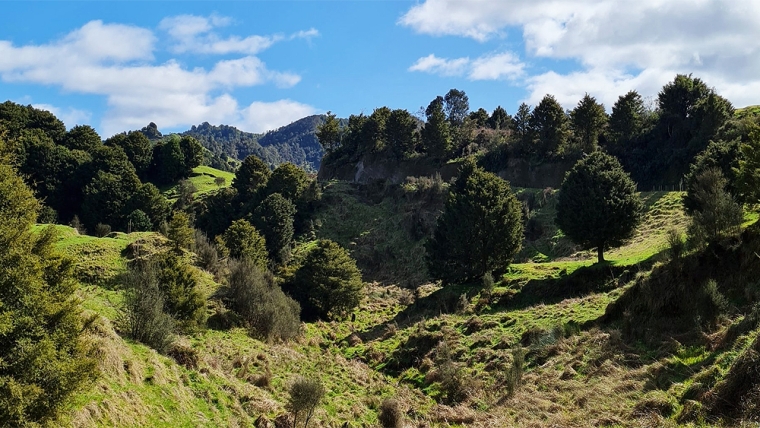
There’s been no shortage of commentary this year about land use in New Zealand, and for good reason. The stakes are high. With global markets demanding stronger environmental credentials, and farmers under pressure from policy, perception and profitability, how we manage and protect our productive land matters more now than ever. So when the Government tabled the Climate Change Response (Emissions Trading Scheme- Forestry Conversion) Amendment Bill, it was a signal that perhaps, finally, someone in Wellington is listening to rural New Zealand.
The Bill, which passed its first reading unanimously, aims to curb the full-scale conversion of productive farmland into carbon-focused exotic forestry. At face value, that’s a win. But the question that’s being asked by many in the sector is whether it goes far enough or fast enough - to meaningfully protect our food-producing base and rural communities.
Since 2017, over 300,000 hectares of sheep and beef country has been lost to forestry. It’s a staggering number. Not driven by organic market shifts or farming decisions, but by regulatory distortion. The Emissions Trading Scheme made it more profitable to plant trees for carbon than to farm for food. That imbalance has hollowed out communities, taken families off the land and undermined the social and economic fabric of the regions. Agriculture and Forestry Minister Todd McClay put it plainly: “Once farms are planted in trees as a result of carbon credits we lose the ability to produce the high-quality safe food that consumers demand and we lose rural jobs, export earnings and the families that go with them.”
The measures in the Bill include a ban on exotic forests entering the ETS if planted on LUC 1–5 land, our best food-growing soils and an annual cap of 15,000 hectares for ETS registrations on LUC 6 land. Time-limited exemptions are also included for projects already underway, and protections are in place for specific Māori-owned land.
But for many farmers, this will feel like a partial fix. It doesn’t undo the damage already done. It won’t take effect until October 2025, leaving the door open for one last speculative rush. And enforcement - always the weak link in ETS administration remains a question mark. Without robust oversight, the potential for loopholes remains very real.
Alongside this, the Government has announced plans to overhaul parts of the Resource Management Act that have long hamstrung growers and food producers. Associate Agriculture Minister Nicola Grigg says proposed changes will remove unnecessary red tape around crop rotation and land use, while supporting long-term water storage solutions. These are sensible, overdue adjustments that acknowledge how critical horticulture and primary production are to our economy. Forecasts show horticulture exports are expected to hit a record $8.5 billion by the end of June next year, with kiwifruit alone tipped to reach $3.9 billion. But it raises the obvious question - why has it taken this long to support our most productive land users, while incentivising monoculture forestry for so long?
The real challenge now is to define a national strategy for land use that looks beyond election cycles and short-term gains. Do we want to build a country that sustains its people and feeds others? Or one that sells off its productive soils in exchange for carbon credits and international offset schemes?
While these policy debates continue at the top, there’s also movement at the grassroots. And that’s where the real long-term promise lies.
This week on The Weekly Hotwire podcast, I spoke to Wendy Sullivan, Marlborough Catchments Coordinator at the New Zealand Landcare Trust. Wendy is involved in the Junior Landcare programme, a collaboration between Landcare Trust and the Bupa Foundation that quietly but powerfully builds environmental resilience from the ground up.
Junior Landcare is exactly the sort of initiative this country needs more of. It brings together schools, retirement villages and community groups to take part in restoration projects that not only help the land but connect people. Whether it’s wetland planting, stream health workshops or simply getting children outside with tin-can bathyscopes to observe freshwater ecosystems, the goal is to grow guardians, young New Zealanders with a tangible connection to the land and the skills to care for it.
Wendy’s role is one of facilitation, connecting landowners, helping with paperwork, organising community days and injecting energy into good ideas. “Water doesn’t have boundaries. Birds and wildlife don’t have boundaries,” she told me. “By everyone working together at a landscape scale, you can have so much more impact than everyone working alone.”
Catchment groups have long been the quiet achievers in rural communities. They’re not loud, they’re not flashy but they get results. They build local trust, increase understanding of landscape-scale issues and offer practical pathways to better environmental outcomes. And they’re growing. Their work not only enhances biodiversity and water quality, but supports mental health, social connection and intergenerational learning.
That last point matters. Junior Landcare explicitly incorporates mental wellbeing into its programme, guiding children through mindfulness exercises before heading out into the field. The evidence is clear, time in nature supports focus, calm, resilience and creativity. And in a world where climate anxiety is increasingly affecting our young people, these activities offer agency and hope.
There’s also a message here for policymakers. Wendy’s work proves that farming and environmental stewardship are not in conflict, they are deeply interwoven. “Farmers are telling us there’s huge benefit in integrating a healthy environment alongside their farming practices,” she said. “Healthy stock, healthy staff, more enjoyable places to live. The social and economic benefits can be enhanced, it’s not one at the cost of the other.”
So while Wellington debates land classification and carbon accounting, people like Wendy are out there helping schools, landowners and communities’ plant native trees, clean up waterways and rediscover their connection to the land. That’s not a “nice-to-have.” That’s nation-building.
If we’re serious about land use reform, it can’t just be about stopping the damage. It has to be about investing in the solutions too. Junior Landcare is one of those solutions. So are catchment groups. They offer a model for how rural and urban New Zealand can work together hands-on, locally led and grounded in shared purpose.
If you haven’t already, I encourage you to listen to my conversation with Wendy on The Weekly Hotwire. It’s a reminder that while Parliament may set the policy, the future of our land will be shaped just as much by those out in the field with their sleeves rolled up.
Because at the end of the day, we all need the food farmers grow. And we all have a stake in protecting the land that feeds us.
Have a listen to the podcast to hear the full story.
Angus Kebbell is the Producer at Tailwind Media. You can contact him here.

We welcome your comments below. If you are not already registered, please register to comment.
Remember we welcome robust, respectful and insightful debate. We don't welcome abusive or defamatory comments and will de-register those repeatedly making such comments. Our current comment policy is here.